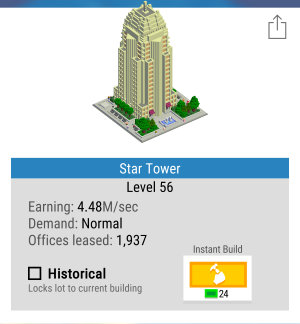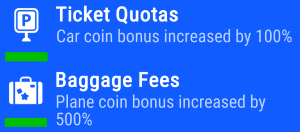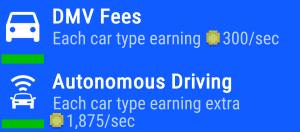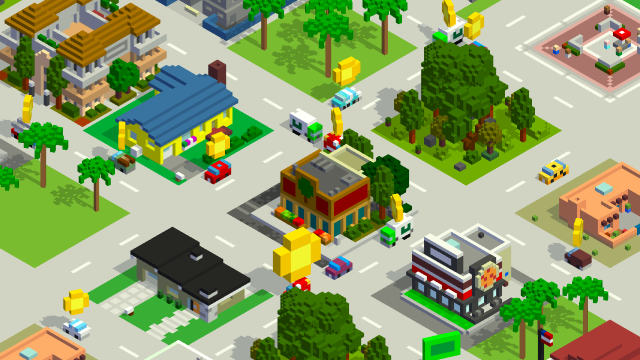Bit City isn’t the most complex idle game out there, but it’s very possible you are missing out on money-making opportunities just by not knowing and utilizing the game’s features properly. That’s what this tips guide is meant to help you do.No one is going to say you can’t play Bit City without knowing this information, but it will definitely help you progress through the game more efficiently.
Have you figured out the purpose of banks yet? What should you spend your Bux on? Which types of buildings are most profitable? There are a lot of questions and some pretty simple answers laid out in this guide.
Above all, make sure you have fun. Don’t get wrapped up in being as profitable as possible if you’re new to the game — do try to make use of the advice seen here, but don’t stress over it. Just progress at your own pace. With that being said, making a lot of money fast is pretty great.
What Does Locking a Building as Being Historical Do?
It may seem like setting a building as historical halts is leveling, but that is not the case. A building that has been set as a historical landmark will continue to level up — it just won’t change into another building on level up.

There are two primary reasons to set something as historical:
- To complete quests that require you to have a set amount of a certain building in your city at a time (For instance, to have two large Star Tower buildings in your city)
- To have increased control over how your city looks
The more you know, right!
Why Bother with Special Buildings?
If you’re like most players, then you’ve probably wandered into the special buildings menu and wondered what the point was. You’re going from city to city, not sticking with one. So why bother with them?

Once unlocked, special buildings will eventually be built in your cities (only one special building each) and will be automatically set as historical. These buildings net more income than standard buildings, making them one of the better Bux investments.
Make Sure You Invest in a City’s Bank Before Moving On to the Next One
The function of the bank isn’t totally obvious. If I recall, the game doesn’t explain it at all, but that’s okay because I’ll explain it for you.

Essentially, what each city’s bank does is give an increase in your passive earnings when not playing the game — and each city’s bank stacks with another. You absolutely want to level them before you move on to the next city because your passive away-gains are abysmal by default.
Work on a city, get it ready to go, then pump a bunch of money into the bank before moving on to the next one. You won’t regret it.
What is Prestige?
I explain this better in my separate and easy to understand Bit City Prestige guide, but here’s the gist:
You restart completely and go back to the first city, but with a multiplier on your earnings, which based on the amount of keys you accumulated before you went through with the Prestige. I do not recommend doing it before you have 100 keys.
What Should You Use Your Bux On?
Bux don’t just grow on trees — much like real money. Time doesn’t either, which is why you might want to consider the Atomic Timekeeping game upgrade as your first investment, especially if you do not intend to spend money on the game.

Bit City goes at a decent rate at normal speed, but there’s no reason not to have Double Time running — but watching ads really sucks. Watching an ad every 10 minutes sucks even more.
I highly recommend investing in Atomic Timekeeping first and getting it up to a time duration you can deal with (30 minutes is a pretty good goal). The only problem is it costs a lot of Bux.
Past Atomic Timekeeping, you should seriously consider investing in special buildings for the reasons mentioned above. If you really want to pump Bux into game upgrades instead of special buildings, consider these first:
- Road to Riches — This one reduces car spawn times by a couple of seconds each upgrade. Cars grant a ton of money in the long run, making this one of the better upgrades for active players.
- Meter Maids — Increases the chance of large car bonuses by 10 percent per level. Great for active players just like Road to Riches, but probably best gone for afterward. It’s your choice.
Both of the above upgrades are great for new players and give a good start, but as mentioned, if you do not intend to spend the $4.99 on infinite Double Time, you should probably get a couple levels in Atomic Timekeeping first — even if it is very expensive.
Speaking of Bux, What’s With the Pension Pig?
Quick answer: A crappy way to get players to spend real money on the game.

Long answer: The Pension Pig accumulates Bux in itself that cannot be used until you break it open, and in order to break it open you have to spend $2.99.
It’s not necessary to break open the Pension Pig to progress or have fun, but if its mass of Bux wealth is driving you crazy, it’s one of the better real money transactions.
Buying Bux outright costs $4.99 for 3500, $9.99 for 10000, or $19.99 for 25000. Overall, the Pension Pig is far more economical. If you want to spend some real money, wait for it to get nice and fat and break it open. If not, ignore it. There is no way to open it without using real money.
A Note on Vehicle Upgrades and What They Do
The wording on a lot of vehicle-centric city upgrades is a little confusing. Let’s break it down, because this is stuff you do need to know.
There are two types of monetary city upgrades for vehicles: Upgrades to how much money their coins grant, and how much each vehicle grants passively.
To give an example, two relatively early upgrades that increase the tap coin rewards are Ticket Quotas and Baggage Fees. These only affect the coins you gain from vehicles when you actively collect them.

On the flip side there are a lot of vehicle upgrades focusing on vehicle passive earning bonuses, such as DMV Fees and Autonomous Driving. These only affect the coins you get via actively playing and collecting coins.

Notice these both mention “earning” and not coins. When you level these you get a passive increase to your income — just look at your per second earnings at the top of the screen and see them go up when you pump money into these upgrades.
For reference, here are the upgrades that affect passive vehicle earning:
- DMV Fees
- Toll Roads
- Autonomous Driving
- Airline Fees
- Dock Tax
- Transportation Study
- International Airport
And here are the ones that affect coin earning from vehicles:
- Ticket Quotas
- Riding Sharing Service
- Emissions Tax
- Baggage Fees
- Cargo Fees
What is the Most Profitable Building Type/What Should I Be Putting on Large Plots of Land?
Businesses and services.
Business and service buildings have higher city upgrade multipliers than residential buildings, at least once you have reached the sixth city. From the tier 6 upgrades onward, businesses and services will be your building cash cows. Reserve your large plots for them.
Let’s structure it like this. If you can reach this tier of upgrades in a single city, this type of building is most valuable:
- Tier 1 upgrades — All equal
- Tier 2 upgrades — Residential and services are best
- Tier 3 upgrades — All equal
- Tier 4 upgrades — All equal
- Tier 5 upgrades — Services are best
- Tier 6 upgrades — Business and services equal
- Tier 7 upgrades — Business and services equal
- Tier 8 upgrades — Business and services equal
Hopefully, this basic breakdown is easy enough to understand.
That’s about it for my advice for new players. There really isn’t much to keep in mind, but the game does not do a good job of explaining all its systems. Good luck with your cities and keep the information laid out here in mind!







Published: Mar 19, 2017 05:28 pm